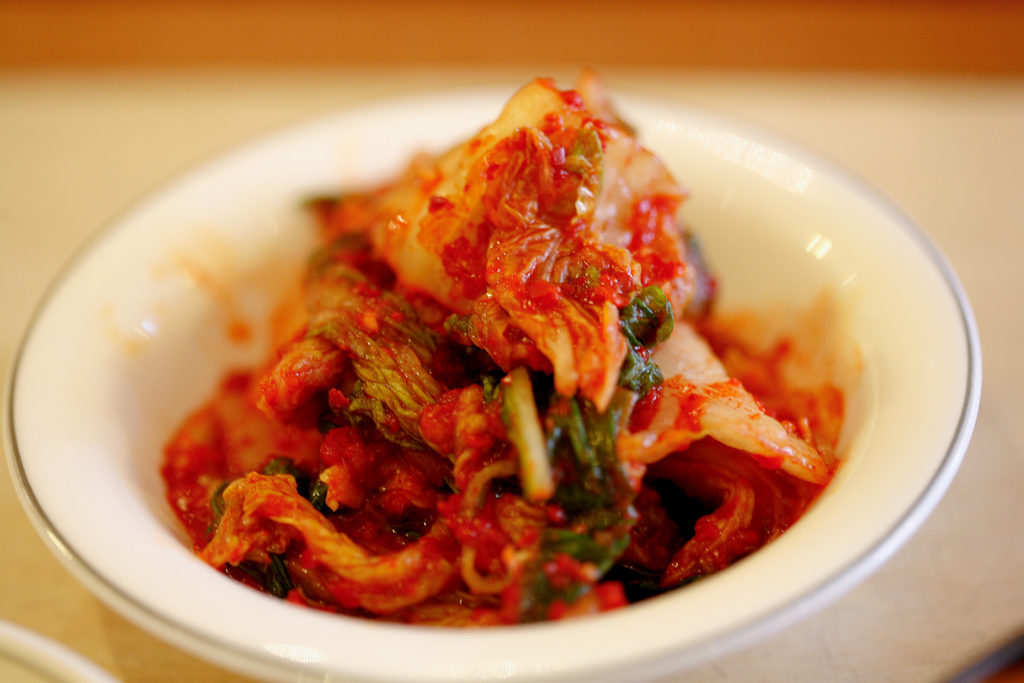Bug Love: New Ways to Eat Fermented Foods
New ways to eat fermented foods

Although not particularly glamorous, eating “bugs” is now considered essential for better gut health. And our increasing appetite for so-called “probiotics” is being played out in the proliferation of fermentation cookbooks and food products hitting store shelves.
Beyond digestive health, the probiotics found in fermented foods have also been linked to improved cholesterol levels (Jones, et al. 2013; Kumar, et al. 2012), oral health (Cildir, et al. 2009) and even healthier body weights (Sanchez, et al. 2014). Which is why the National Institutes of Health set forth with their Human Microbiome Project to better identify the critters in our bodies that are associated with health or disease. Here are some simple and delicious ways to micro-manage your everyday diet.
If You Drink: Smoothies
Add: Kefir
As with yogurt, kefir is a fermented dairy product which contains good amounts of probiotics not to mention protein and bone-building calcium. A 2013 study in the British Journal of Nutrition found that higher intakes of fermented milk products can help lower blood pressure numbers which, in turn, helps fend off hypertension (Dong et al. 2013). If you’re already eating yogurt, the benefit of consuming kefir as well is that you’ll be exposed to a different populace of gut-friendly bacteria that may have differing health benefits. Drinkable versions of kefir such as Lifeway have a distinct tart taste that can elevate post-workout smoothies, granola and even homemade popsicles. But be wary of fruit-flavored versions, which can have up to three times the amount of sugar as plain types.
If You Eat: Scrambled Eggs
Add: Kimchi
The food truck craze has brought kimchi into the American food lexicon. Made when vegetables (most often cabbage) are mixed with a fiery garlic chili seasoning, kimchi undergoes fermentation by lactic acid bacteria. Preliminary research suggests that regularly eating kimchi can help improve insulin sensitivity which would offer some protection against diabetes (An, et al. 2013). A good kimichi will bring to the table four poles of flavor: salty, sweet, sour, and spicy. It’s the perfect way to take scrambled eggs and omelets from meh to memorable. Also use it as a topping for burgers, sandwiches, tacos and pizza. Or mix into soups and stir-frys.
If You Eat: Salads
Add: Miso
The miso we see in stores is most often made by combining cooked soybeans with salt, koji (a starter enzyme that breaks down proteins) and rice or barley. Left to ferment for a few months or up to 3 years, a paste is produced that is similar in consistency to nut butters and awash in beneficial bacteria. To keep all the probiotics in miso alive and happy, however, it’s best not to expose miso to high heats (as is the case with most soups), which makes salad dressings a perfect way to take advantage of its umami flavor and emulsifying powers. Try whisking a tablespoon of miso paste with olive oil, rice vinegar and grated ginger. Also kick mashed potatoes up a notch by stirring in miso paste.
If You Eat: Sandwiches
Add: Sauerkraut
Submerged in a salty liquid for several days, cabbage slowly ferments into the crunchy, sour condiment we know as sauerkraut. Think of it as a Western guise of kimchi. Great as a standalone side dish for improved digestive health, sauerkraut can also instantly jazz up your lunch sandwiches with its unique texture and quintessential tang. Mashed potatoes, coleslaw, tacos, enchiladas, scrambled eggs, grain salads, burgers and nearly anything made with pork can also benefit from this fermented delight. You can also Google “Chocolate Sauerkraut Cake” to prove that opposites attract. To be sure the sauerkraut you buy still harbors live cultures and isn’t just cabbage marinated in vinegar, be sure to select only brands that have not been pasteurized and require refrigeration.
PHOTOGRAPHY: Charles Haynes
References
Cildir, S.K., et al. 2009. Reduction of salivary mutans streptococci in orthodontic patients during daily consumption of yoghurt containing probiotic bacteria. European Journal of Orthodonics, 31(4), 407–11. http://www.ncbi.nlm.nih.gov/pubmed/19193706
Dong, J.Y., et al. 2013. Effect of probiotic fermented milk on blood pressure: a meta-analysis of randomised controlled trials. British Journal of Nutrition, 110 (7), 1188–94. http://www.ncbi.nlm.nih.gov/pubmed/23823502
Jones, M.L., et al. 2013. Cholesterol lowering with bile salt hydrolase-active probiotic bacteria, mechanism of action, clinical evidence, and future direction for heart health applications. Expert Opinion on Biology Therapy, 13 (5), 631–42. http://www.ncbi.nlm.nih.gov/pubmed/23350815
Kumar, M., et al. 2012. Cholesterol-lowering probiotics as potential biotherapeutics for metabolic diseases. Experimental Diabetes Research, May, 902–17. http://www.ncbi.nlm.nih.gov/pubmed/22611376
Sanchez, M., et al. 2014. Effect of Lactobacillus rhamnosus CGMCC1.3724 supplementation on weight loss and maintenance in obese men and women. British Journal of Nutrition, 111 (8), 1507–19. http://www.ncbi.nlm.nih.gov/pubmed/24299712
An, S.Y., et al. 2013. Beneficial effects of fresh and fermented kimchi in prediabetic individuals. Annals of Nutrition & Metabolism, 63 (1-2), 111–9. http://www.ncbi.nlm.nih.gov/pubmed/23969321
Matthew Kadey, MS, RD
Matthew Kadey, MS, RD, is a James Beard Award–winning food journalist, dietitian and author of the cookbook Rocket Fuel: Power-Packed Food for Sport + Adventure (VeloPress 2016). He has written for dozens of magazines, including Runner’s World, Men’s Health, Shape, Men’s Fitness and Muscle and Fitness.




